 When it comes to a clay-filled landscape, you may feel a little limited in the plants and trees you can plant. You cannot simply throw in some nursery-grown plants into the soil and expect them to flourish. It takes a little bit of tender loving care to get them established. Over time, they will acclimate to their new home.
When it comes to a clay-filled landscape, you may feel a little limited in the plants and trees you can plant. You cannot simply throw in some nursery-grown plants into the soil and expect them to flourish. It takes a little bit of tender loving care to get them established. Over time, they will acclimate to their new home.
We know how important and rewarding it is to have a tree-filled landscape! So, if you have an area full of clay and are wondering what you can plant, look no further. We compiled a list of 15 trees that perform well in wet clay soil. So, without further ado, let's get into it!
1. Alder
Alder trees are fast-growing deciduous trees that belong to the birch family. There is a handful of alder tree varieties, each one having slightly different characteristics. Overall, their leaves are simple, alternate, and serrated. Each tree has both male and female flowers, called catkins. Incredibly, depending on the variety, the alder tree can reach between 10 and 120 feet in height. Its Latin name is Alnus.
These types of trees can naturally harness nitrogen, allowing them to grow in areas with less fertile soil (like clay). It thrives anywhere with damp grounds. Once the tree's roots have been established, it can survive some drought.
Future Shade Trees
Due to their fast growth, alder trees can become great shade trees in no time. Planting them in a group will ensure that there will be adequate shade.
2. Willow
Willow trees look whimsical in any landscape. The tree features long, sweeping branches with silvery green leaves extending from them. It can reach a height between 30 and 40 feet with an equally wide canopy. Their limbs are rather fragile, so if there are heavy winds, they're susceptible to breakage. Its Latin name is Salix.
Willows do well in USDA plant hardiness zones 4 through 9. Full sun to partial shade is appropriate for its growth and health. Its root system is shallow yet large, so keep that in mind. The willow does best when it's located in soil that's kept evenly moist. During periods of drought, ensure that the tree receives a sufficient amount of water.
Dreamy Aesthetic
Willow trees are simply magical in the landscape and have a great way of lightening up the overall feel of the area.
2 Live Plants
Click here to see more on Amazon.
3. Cypress
The cypress tree is a conifer that features short, feathery green needles. In the fall, the needles turn red or brown then drop. Its bark is reddish-brown and rough. The trees can reach an astounding 70 feet in height, so plan accordingly. Its Latin name is Taxodium.
While cypress trees are native to southern climates, they're adaptable in many other climates. Cypress trees can grow in USDA plant hardiness zones 4 through 10. These types of trees are very suitable for wet areas. Light sandy or loamy soil is ideal. Cypress trees perform best in full sun but can tolerate partial shade.
Tree Tunnel
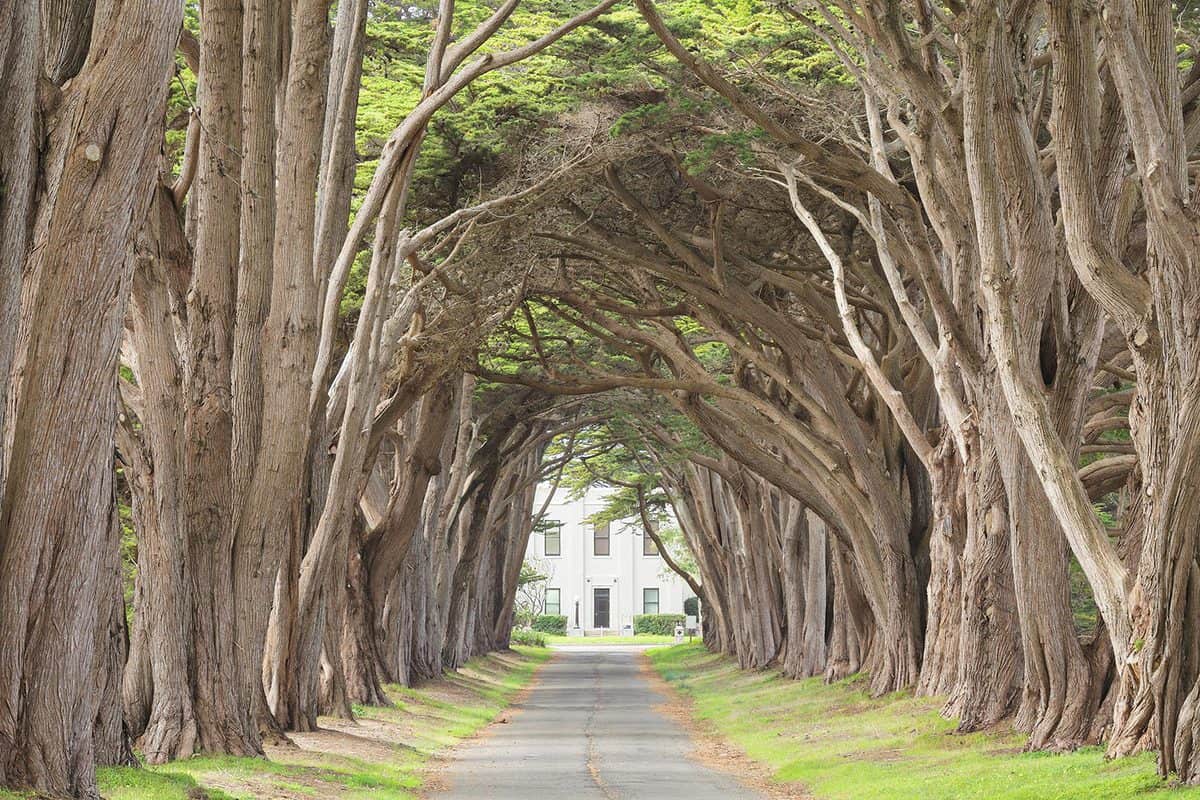
Tree tunnels are a beautiful phenomenon that creates a cozy, intriguing, and safe feeling. The canopies overhead enclose the area and encourage wonder.
4. River Birch
The river birch grows relatively quickly, helping it rise in popularity. Its bark is unique with its curling appearance. The somewhat triangular leaves are glossy and green with a length between 2 and 3 inches. The typical height for river birch trees is between 40 and 70 feet in height. Its Latin name is Betula nigra.
As the name suggests, they naturally grow in wet areas. They're used to heavy, wet soils but can adapt to other types. River birch trees are hardy in USDA plant hardiness zones 4 through 9. Full sun is ideal, but they can tolerate partial shade.
Water Companion
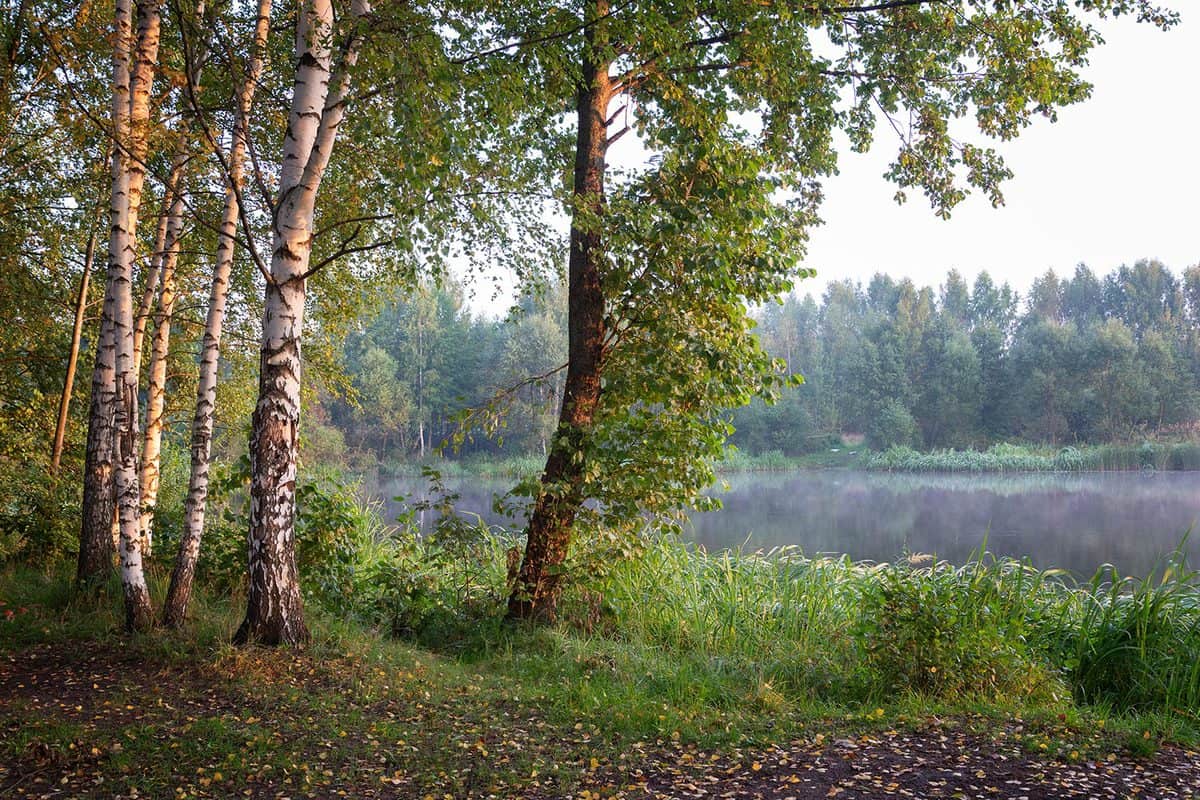
If you have an area in your landscape with water nearby, your river birch would love to be there.
Live 2-3 Foot Tall Tree
Click here to see more on Amazon.
5. Poplar
At maturity, the deciduous poplar tree can reach a height between 30 and 40 feet. Amazingly, it can grow up to 8 feet each year. Its triangular leaves are silvery green and measure between 3 and 6 inches long and 4 and 5 inches wide. Its Latin name is Populus.
This type of tree should receive at least 6 hours of direct sunlight each day. The poplar tree is hardy in USDA plant hardiness zones 3 through 9. The soil could be acidic or alkaline as well as moist.
Sentinel Trees
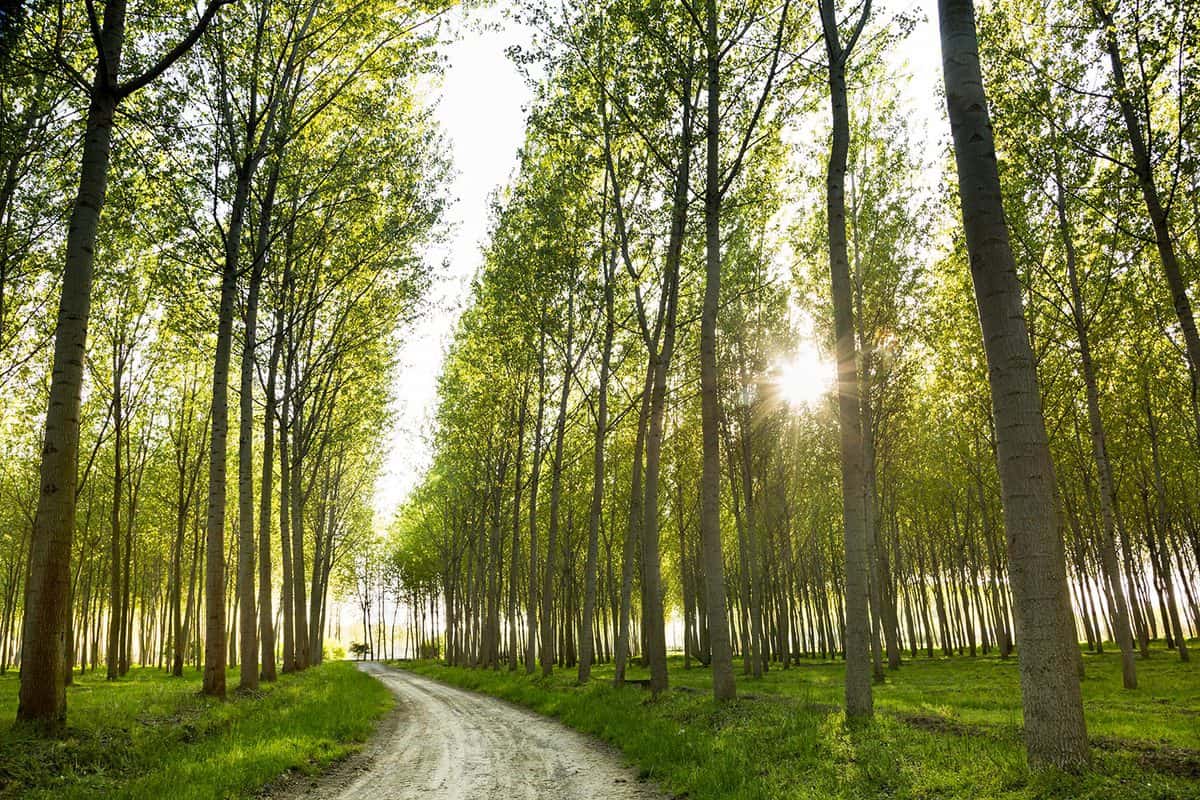
If you have plenty of space and sunlight, grow some mighty polar trees in rows for strong visual impact.
6. Black Maple
At maturity, the deciduous black maple can reach a height between 60 and 80 feet. You'll definitely enjoy fall color with this tree's leaves. The bark can be grayish brown or grayish black. The leaves are 3-lobed and 4 to 6 inches long and wide. Its Latin name is Acer nigrum.
The black maple can grow in a wide variety of soil conditions, but most commonly in moist soils. Plant this maple in a spot that receives full sunlight. You can tap this tree to create syrup from its sap!
Vibrant Foliage
The black maple is a showstopper with its gorgeous vibrant foliage that's full of rich color from springtime to fall.
7. Serviceberry
The serviceberry tree shows off for 3 full seasons: snow white flowers in the spring, bright edible berries in the summer, and fiery colors in the fall. There are a few varieties of this tree, meaning their heights range from 4 feet to 40 feet. Its Latin name is Amelanchier.
Serviceberry trees perform best in full sun and moist, well-draining, slightly acidic soils. The tree is hardy in USDA plant hardiness zones 4 through 8, and even down to zone 2 sometimes.
Seasonal Intrigue
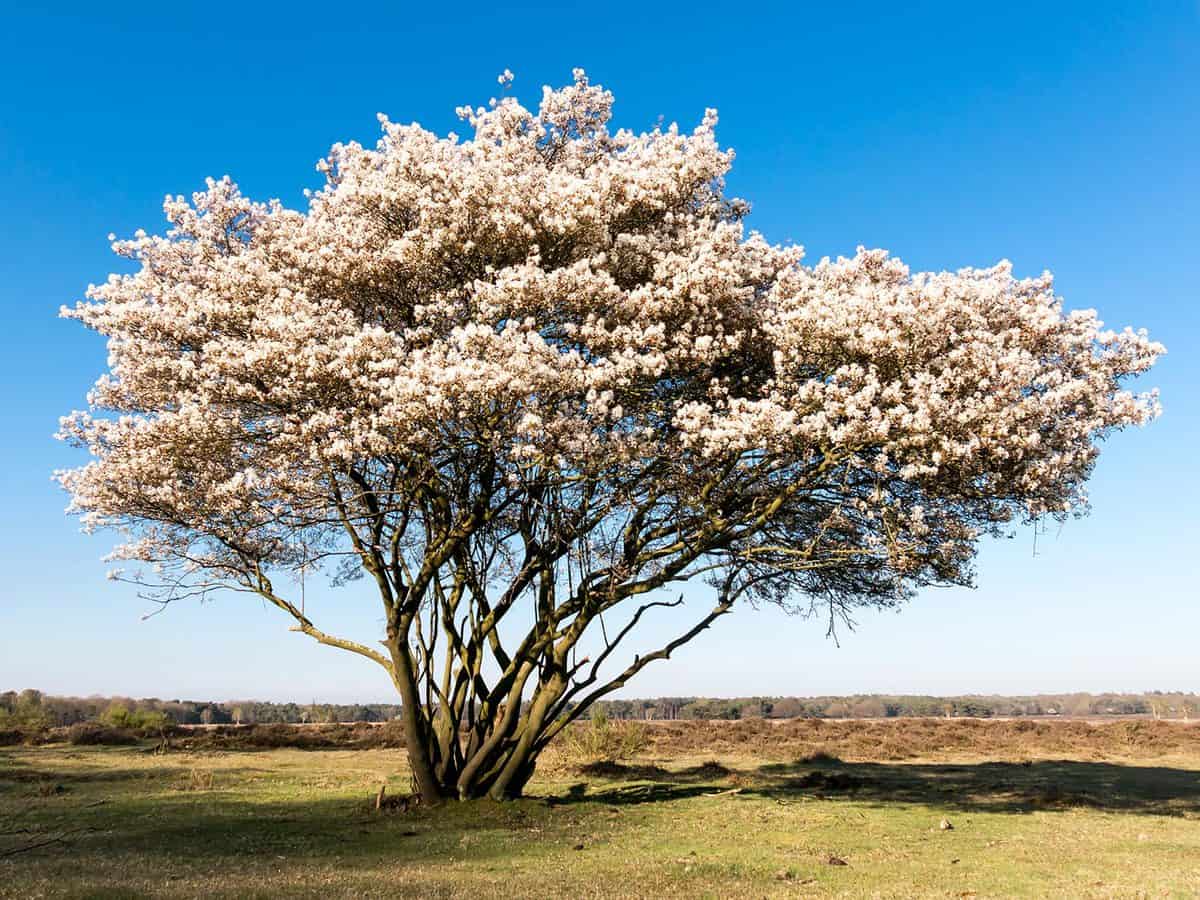
Springtime will definitely have this tree showing off its beautiful white flowers. Enjoy all the seasonal colors it provides.
8. American Hornbeam
The deciduous American hornbeam tree has a show of color on its leaves. The new leaves begin as a reddish-purple color, transition to deep green, then finish out in the fall with yellow and orangeish-red. At maturity, it reaches 20 to 30 feet in both height and width. Its Latin name is Carpinus caroliniana.
It's hardy in USDA plant hardiness zones 3 through 9. While this tree performs best in full sun, it can tolerate some partial shade or even full shade areas. It does well in moist soils that are well-draining.
Lined Walkway
American hornbeams make an excellent choice for lining walkways.
9. Northern Catalpa
If you want a showy tree, look no further. The northern catalpa features white, showy flowers, large heart-shaped leaves, and a twisting trunk and branches. At maturity, this tree reaches between 40 and 60 feet in height. Its Latin name is Catalpa speciosa.
This tree is hardy in USDA plant hardiness zones 4 through 8. Both full sun and partial shade are appropriate for this tree's health. It can thrive in just about any type of soil, too.
Showy Features
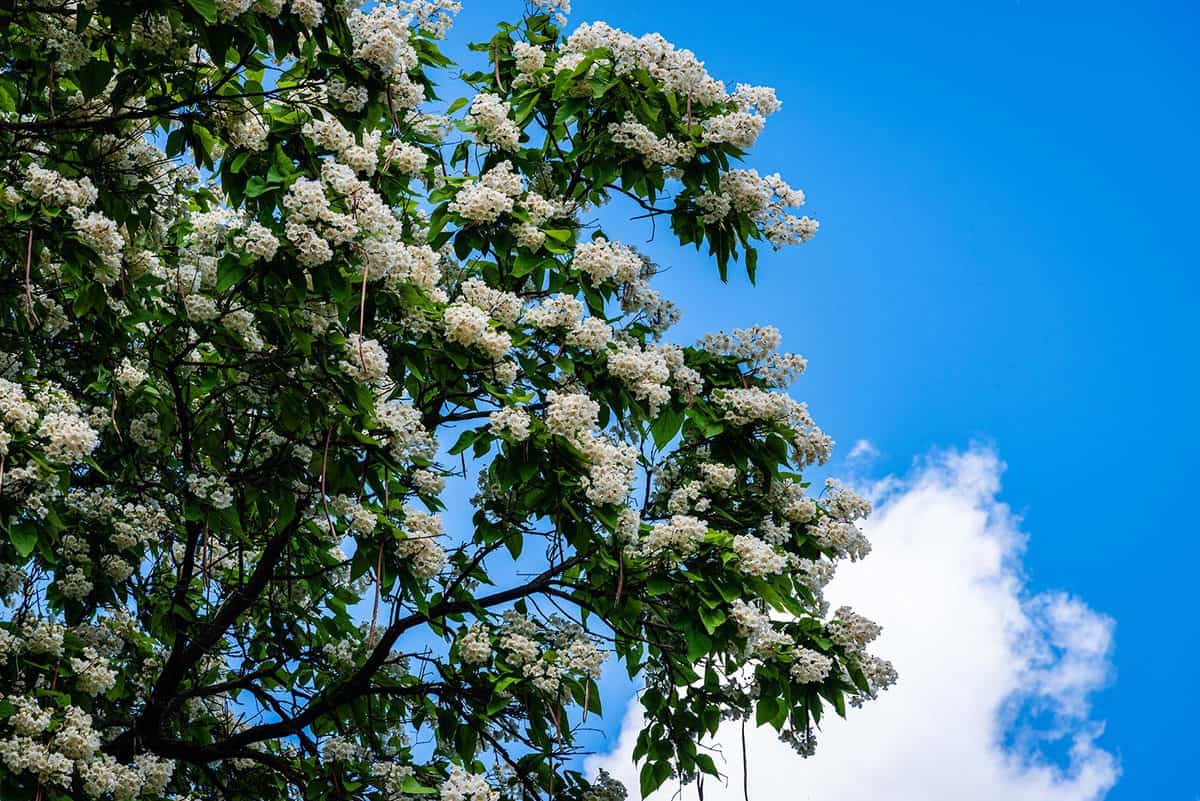
If you want a showy tree in your landscape, check out what this pair of northern catalpas can do.
Northern Catalpa Seedling
Click here to see more on Amazon.
10. Common Hackberry
The large, deciduous common hackberry features a beautiful light-colored wood with unique asymmetrical leaves. At maturity, this tree reaches a height between 30 and 50 feet. If you want a hardy tree, give this one a shot. Its Latin name is Celtis occidentalis.
The hackberry is hardy in USDA plant hardiness zones 3 through 9. This tree prefers to grow in full sun, getting at least 6 hours of direct sunlight each day. It can grow in any type of soil and can even tolerate some drought and flooding conditions.
Tough Tree
This tough, hardy tree will do wonders for your landscape, lasting for many years to come.
11. Green Ash
The green ash makes for an excellent shade tree. At maturity, the green ash can reach a height between 50 and 60 feet with a spread around 25 feet. Its compound leaves measure 6 to 9 inches in length. They're shiny green then turn yellow in the fall. Its Latin name is Fraxinus pennsylvanica.
This tree prefers full sun and can withstand a plethora of soil conditions but it does prefer wet conditions. The green ash is hardy in USDA plant hardiness zones 2 through 9.
Shaded Yard
Consider the green ash to meet all your shaded yard dreams.
12. Sycamore
The sycamore tree has an interesting camouflage pattern on its bark. The gray and brown bark can peel off to reveal light grey or white wood underneath. These trees are massive, reaching heights between 75 and 100 feet. Its Latin name is Platanus occidentalis.
Sycamore trees prefer nutrient-rich soil that's moist and well-draining. It's hardy in USDA plant hardiness zones 4 through 9. It does well in full sun to partial shade.
Single Stunner

Planting just one sycamore tree in your landscape can still turn quite a few heads.
13. Swamp White Oak
The swamp white all tree features interesting peeling bark with lustrous lobed leaves that are two-toned. You'll enjoy a wealth of fall color from this tree. At maturity, it can reach both height and width between 50 and 60 feet. Its Latin name is Quercus bicolor.
This tree prefers soil that's well-draining, slightly acidic, and moist. It's hardy in USDA plant hardiness zones 3 through 8. Plant the tree in a spot that receives at least 6 hours of direct sunlight each day.
Healthy Appearance
As you can see, this type of tree looks great and shows off nice color and texture.
14. American Arborvitae
This lovely evergreen tree has a narrow, pyramid shape. They're tall, elegant, and provide lush green color to the landscape. It can grow to a height between 40 and 60 feet with a spread between 10 and 15 feet. Its Latin name is Thuja occidentalis.
The American arborvitae is hardy in USDA plant hardiness zones 3 through 7. Ideally, it should get full sun exposure. It grows well in virtually any type of soil.
Privacy Screen
Planting a row of American arborvitae is a great way to create a nice, natural privacy screen.
5 Live Trees, 2-Inch Pot
Click here to see more on Amazon.
15. Lacebark Elm
The bark of a lacebark elm looks mottled, giving it a unique look. Its leaves are dark green and glossy, with a length of up to 2 inches. Enjoy the fall colors that it will show off. At maturity, the lacebark elm can reach a height between 40 and 50 feet and spread between 35 and 45 feet. Its Latin name is Ulmus parvifolia.
The lacebark elm is hardy in USDA plant hardiness zones 5 through 9. It does well in either full sun or partial shade and can grow in any type of soil.
Ornamental Value
The growth and aesthetic of the lacebark elm can very well be used in the landscape as an ornamental feature.
Before you go, make sure to check out these other great garden guides:




